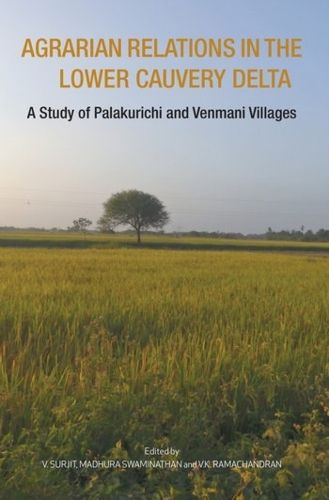Readings Newsletter
Become a Readings Member to make your shopping experience even easier.
Sign in or sign up for free!
You’re not far away from qualifying for FREE standard shipping within Australia
You’ve qualified for FREE standard shipping within Australia
The cart is loading…






This book discusses agrarian relations in the Lower Cauvery delta, historically part of the rice bowl of south India, based on socio-economic studies of two villages in the region. The two villages, surveyed in 2018-19 by the Foundation for Agrarian Studies, are Venmani and Palakurichi, located in Nagapattinam district of Tamil Nadu. Venmani was the site of an atrocity in 1968, when upper-caste landlords burned down the huts of Scheduled Caste agricultural workers to suppress their struggle for higher wages and better working conditions, killing forty-four women and children. Palakurichi has been a site of study for over a century, with its first survey conducted as part of the Slater village project in 1916 and a further five studies since then, providing a unique opportunity to study long-term change in rural India. The essays in the book use data from the village studies to analyse features of caste discrimination and class differentiation. They point to important changes in the class structure of the two villages, with a decline in the number of landlords, a proliferation of small and marginal landowning peasants, and a transformation of the class of agricultural labourers into a class of manual workers.
$9.00 standard shipping within Australia
FREE standard shipping within Australia for orders over $100.00
Express & International shipping calculated at checkout
This book discusses agrarian relations in the Lower Cauvery delta, historically part of the rice bowl of south India, based on socio-economic studies of two villages in the region. The two villages, surveyed in 2018-19 by the Foundation for Agrarian Studies, are Venmani and Palakurichi, located in Nagapattinam district of Tamil Nadu. Venmani was the site of an atrocity in 1968, when upper-caste landlords burned down the huts of Scheduled Caste agricultural workers to suppress their struggle for higher wages and better working conditions, killing forty-four women and children. Palakurichi has been a site of study for over a century, with its first survey conducted as part of the Slater village project in 1916 and a further five studies since then, providing a unique opportunity to study long-term change in rural India. The essays in the book use data from the village studies to analyse features of caste discrimination and class differentiation. They point to important changes in the class structure of the two villages, with a decline in the number of landlords, a proliferation of small and marginal landowning peasants, and a transformation of the class of agricultural labourers into a class of manual workers.